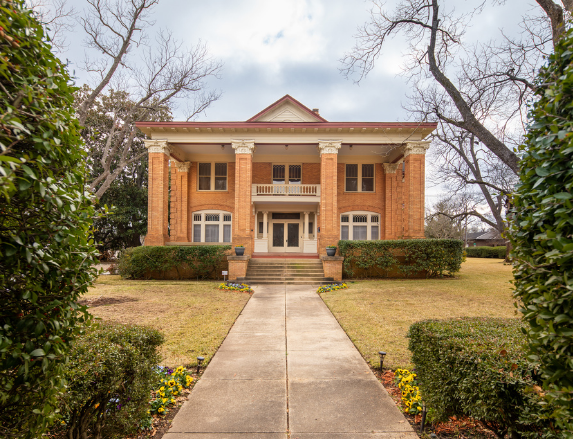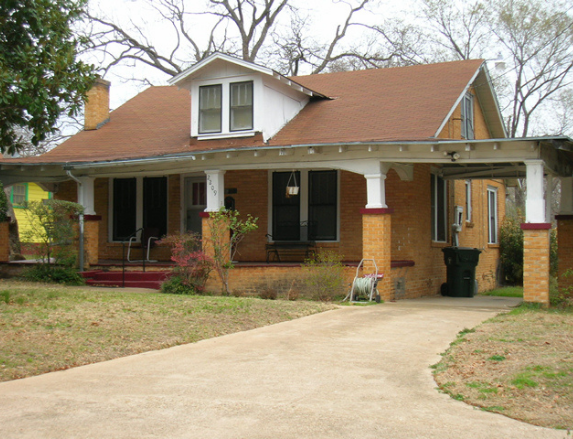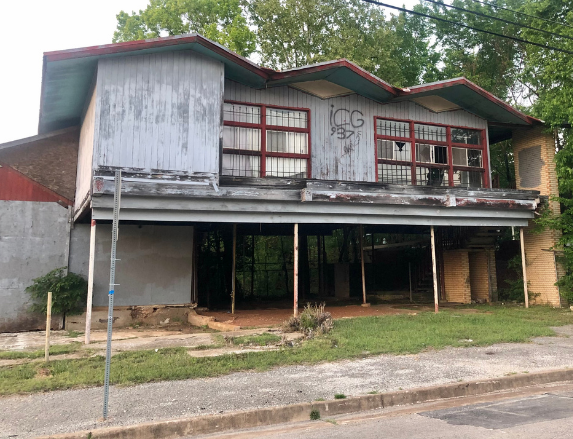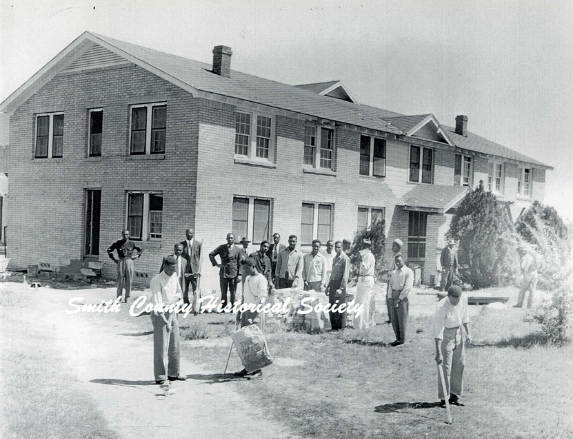Twenty nine year old Keiston Reece wants his generation of Tyler residents to see their town anew – noticing its past to change its future.
Reece, who has lived in Tyler all his life, is not speaking in metaphors. His focus on the past is the brick, mortar and wood of Tyler’s historic homes.

For Reece, an interest in Tyler’s older homes began in 2019, thanks to a yard sign announcing a historic home tour.
“I just happened to be driving past Bergfeld Park and saw one of the little pink signs they had in somebody’s yard. I went to the website and I saw they had a candlelight party. I decided to go … because they had wine and hors d’oeuvres and stuff, he said.
Touring the historic homes that day left an impression on Reece, launching him to become among Historic Tyler’s youngest members. He has become a student of Tyler neighborhoods and homes boasting an age of 50 or more years.
Three criteria make a property historic, according to the Texas Historical Commission. It must be at least 50 years old; retain the physical characteristics from its time period; and have significance on a local, state or national level.
Founded in 1977, Historic Tyler is an independent nonprofit organization emphasizing education, advocacy and action to preserve and appreciate Tyler’s historic properties.
“Every historic home, from the grand mansions, modest cottages, and everything in between, plays an important role in maintaining the historical integrity of our city,” Ashley Washmon, executive director of Historic Tyler, wrote in an email.
Washmon said properties have intrinsic value because of their building materials. “Wood back in those days was denser and better quality than the wood we use today; [also] handmade bricks,” she said.
Historic Tyler has an interest in properties, regardless of their historic designation.“We see value in all of the structures,” Washmon said. “Any historic structure in town is under our umbrella.”
Finding lesser-known-but-significant Tyler structures may entail venturing out of the celebrated Azalea District. Where else is Tyler’s history on display?
Reece and Washmon helped guide The Tyler Loop to north Tyler’s photo-worthy, history-rich homes and buildings.
1311 W. Oakwood Street

“So you have the Patterson house…on Oakwood Street. It was originally owned by John Lollar,” Reece said.
According to Tyler Historic Preservation, in 1871, Lollar’s house was sold to John M. Patterson, and it remained in the Patterson family until 1964. The home was remodeled in the Queen Anne style in 1882.
604 Woldert Street

“Then you have another house which is on Woldert Street. It was owned by John G. Woldert … a German immigrant. [The home] was actually on the [Historic Tyler] home tour in 2021,” Reece said.
One of Woldert’s sons, Alexander, built the Prairie style home between 1898-1906.
2209 Grand Avenue

“And then you have Thomas Jefferson Senior, who has a house on Grand Avenue…which is very close to Texas College,” Reece said.
Thomas Jefferson Givens, Sr. built the house in 1931. Jefferson’s wife, Annie Mae Givens, housed young women Texas College students there. Four generations of the Givens family have lived in the home.
Harris Grocery Store on The Cut

The Cut, concentrated along Vance St. and Palace Ave. in north Tyler, was once a booming Black business district, boasting a pharmacy, dentist, movie house, night clubs, hair salons, hotels, service stations, restaurants, shoe repair and grocery stores, including Harris Grocery.
“The Cut…has dissolved due to the red lining and the one way flow of infrastructure,” Reece said.
“As it currently stands, it needs a lot of work. It holds a dear place in my heart. It’s symbolic of longevity and perseverance. I feel like The Cut is something that will always exist no matter how dilapidated it may appear to be.”
For Reece, The Cut means more than its outward appearance. “There’s something in the air that brick and mortar can’t really grasp or symbolize,” he said.
Harris Grocery, which doubled as the grocer’s residence, was demolished in 2021. Its folded-plate rooflines made it an architectural standout.
For a video tour of The Cut, including Harris Grocery Store, see former Tyler city councilmember Ed Moore’s video.
Butler College, South Lyons Ave. and Bellwood Road

“I would say the Butler College community [is something I’m curious about.] I would like to learn more about it,” Reece said.
Originally East Texas Baptist Academy founded in 1905, Butler College first boasted a high school and junior college classes. By the late 50s, Butler was a four-year college, offering bachelor of arts and bachelor of science degrees. Butler’s student population declined in the following decades. In 1972, the school closed.
Today, the D. C. Brown Heritage Center sits on Butler’s former campus.
A tangible tie
Why does Tyler’s past documented in architecture matter?
“Nobody goes to visit a town to see their big box stores, right?” Washmon said.
“These historic buildings are a physical, tangible tie to the past. Each has a story to tell … they create the town’s culture and uniqueness. And once they’re gone, you can’t recreate this,” she said.
Washmon said Historic Tyler relies heavily on volunteers and welcomes participation from interested residents, especially during its spring home tours. Additionally, the organization has a coffee table book in the works, “The Art of Preservation,” with plans for publication mid-2023.
Reece’s interest in Tyler’s historic homes has helped him cast a vision for his generation.
“Historic Tyler could provide an opportunity for young millennials to learn the history and then recreate that in a way that it doesn’t box anyone out, but allows people who have been systematically marginalized to reclaim what they lost in a way that’s helpful and not spiteful,” Reece said.
Reece said the places where we perform activities of life matter. “It starts with where we lay our heads, where we have barbecues, where we have birthday parties, where we announce pregnancies.
“If we can become aware of how all of those things are impacting us, then it would give a significance and sentiment to places where we choose to live for the rest of our lives.”
Love what you're seeing in our posts? Help power our local, nonprofit journalism platform — from in-depth reads, to freelance training, to COVID Stories videos, to intimate portraits of East Texans through storytelling.
Our readers have told us they want to better understand this place we all call home, from Tyler's north-south divide to our city's changing demographics. What systemic issues need attention? What are are greatest concerns and hopes? What matters most to Tylerites and East Texans?
Help us create more informed, more connected, more engaged Tyler. Help us continue providing no paywall, free access posts. Become a member today. Your $15/month contribution drives our work.







